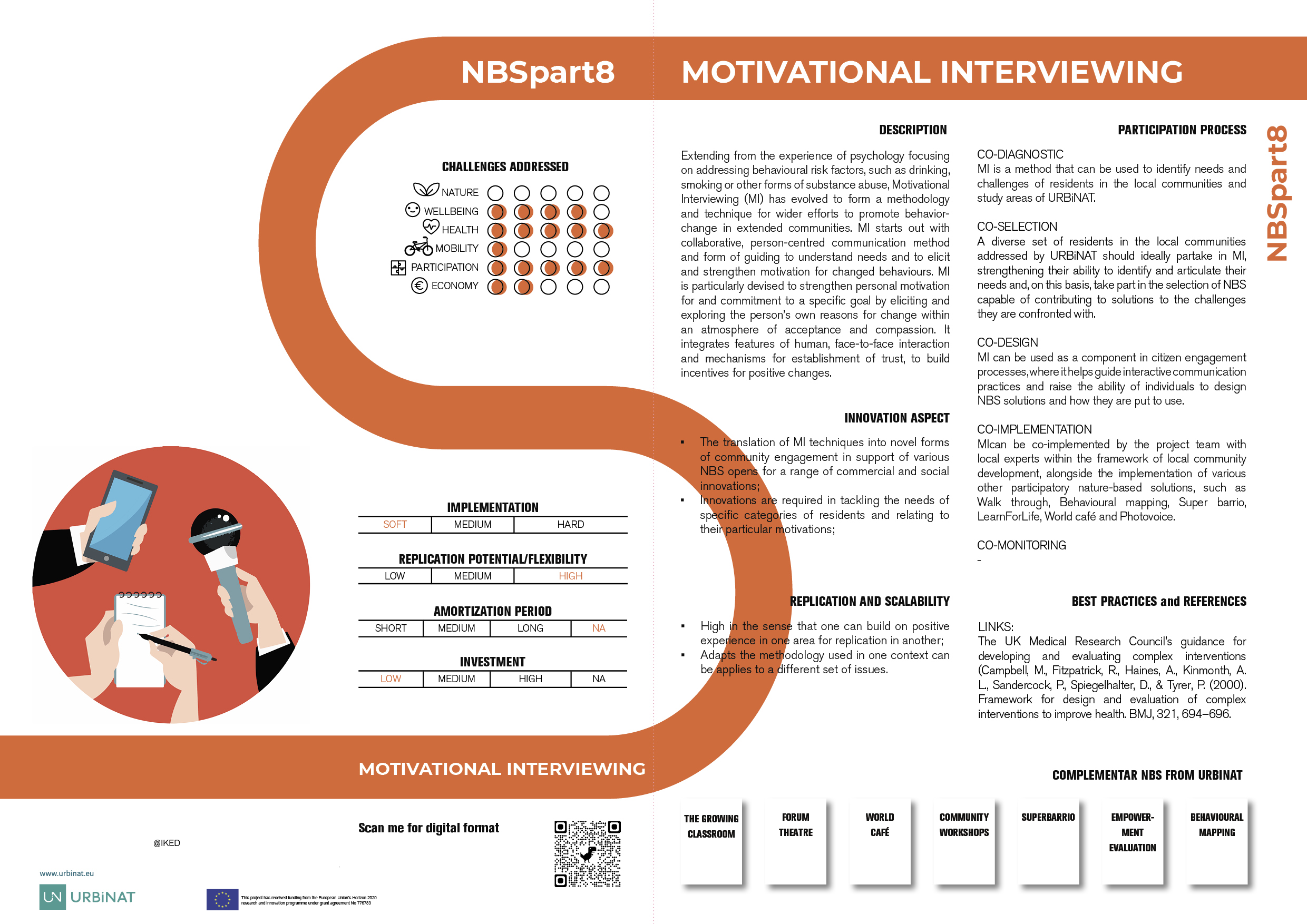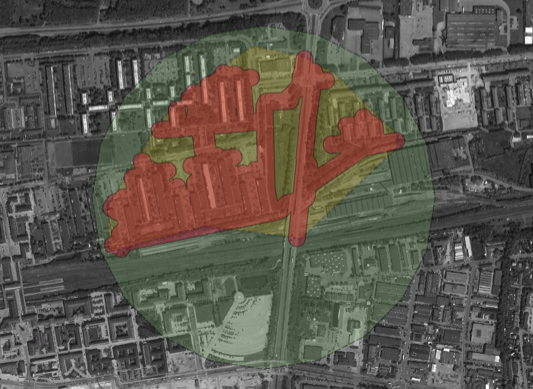Motivational Interviewing (MI)
CHALLENGES ADDRESSED
Score impact
Nature
Wellbeing
Health
Mobility
Participation
Economy
DESCRIPTION
Extending from the experience of psychology focusing on addressing behavioural risk factors, such as drinking, smoking or other forms of substance abuse, Motivational Interviewing (MI) has evolved to form a methodology and technique for wider efforts to promote behavior- change in extended communities. MI starts out with collaborative, person-centred communication method and form of guiding to understand needs and to elicit and strengthen motivation for changed behaviours. MI is particularly devised to strengthen personal motivation for and commitment to a specific goal by eliciting and exploring the person’s own reasons for change within an atmosphere of acceptance and compassion. It integrates features of human, face-to-face interaction and mechanisms for establishment of trust, to build incentives for positive changes.

[PDF Download] Motivational Interviewing
Extending from the experience of psychology focusing on addressing behavioural risk factors, such as drinking, smoking or other forms of substance abuse, Motivational Interviewing (MI) has evolved to form a methodology and technique for wider efforts to promote behavior- change in extended communities. MI starts out with collaborative, person-centred communication method and form of guiding to understand needs and to elicit and strengthen motivation for changed behaviours. MI is particularly devised to strengthen personal motivation for and commitment to a specific goal by eliciting and exploring the person’s own reasons for change within an atmosphere of acceptance and compassion. It integrates features of human, face-to-face interaction and mechanisms for establishment of trust, to build incentives for positive changes.
INNOVATION ASPECT
- The translation of MI techniques into novel forms of community engagement in support of various NBS opens for a range of commercial and social innovations;
- Innovations are required in tackling the needs of specific categories of residents and relating to their particular motivations;
REPLICATION AND SCALABILITY
- High in the sense that one can build on positive experience in one area for replication in another;
- Adapts the methodology used in one context can be applies to a different set of issues.
PARTICIPATION PROCESS

-
1
CO-DIAGNOSTIC
MI can be used as a component in citizen engagement processes, where it helps guide interactive communication practices and raise the ability of individuals to design NBS solutions and how they are put to use.
-
2
CO-SELECTION
A diverse set of residents in the local communities addressed by URBiNAT should ideally partake in MI, strengthening their ability to identify and articulate their needs and, on this basis, take part in the selection of NBS capable of contributing to solutions to the challenges they are confronted with.
-
3
CO-IMPLEMENTATION
MIcan be co-implemented by the project team with local experts within the framework of local community development, alongside the implementation of various other participatory nature-based solutions, such as Walk through, Behavioural mapping, Super barrio, LearnForLife, World café and Photovoice.
BEST PRACTICES and REFERENCES
LINKS:
The UK Medical Research Council’s guidance for developing and evaluating complex interventions (Campbell, M., Fitzpatrick, R., Haines, A., Kinmonth, A. L., Sandercock, P., Spiegelhalter, D., & Tyrer, P. (2000). Framework for design and evaluation of complex interventions to improve health. BMJ, 321, 694–696.


